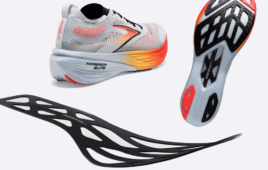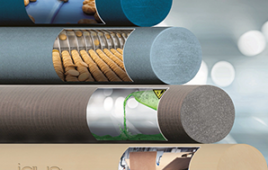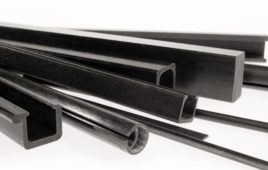Even from its earliest days, semiconductor fabrication has challenged and pushed the realm of automated, ultra-clean manufacturing. From pressurized work environments to high vacuum deposition chambers, getting power, control and monitoring signals into and out of these non-atmospheric pressure and vacuum environments presents a constant challenge. When you consider that the slightest amount of contamination, from ambient air to dust, could scrap a $100,000+ wafer, this is an area that does not tolerate failure.
Typically, glass-to-metal (GTM) hermetic seals for wire feedthroughs are the choice in semiconductor fabrication applications. But their constraints of size, limited geometry, deflection breakage risk and shielding options have opened the door to newer options. In addition, semiconductor fabrication now has greater need for higher power, more controls, and increased monitoring, as well as increased signal density and shielding. Relying on twisted pair and twisted shielded pair cabling, and the result is a tough and sometimes impossible scenario to solve with traditional glass-to-metal seals.

In semiconductor applications, the space available in a vacuum chamber may require square, rectangular or triangular feedthroughs – shapes easily accommodated with ductile, epoxy-based filler.
Today’s engineered epoxy seals offer the best of both glass and ceramic seals. They can be routed through tight angles and curves, handle any kind of shielded wire or cable and tightly seal in any shape of feedthrough. “Traditionally, epoxy-based feedthroughs have not been seen as a viable alternative to glass-metal and ceramic-metal alternatives in the semiconductor fab business,” said Ed Douglas, owner and president of Douglas Electrical Equipment Company. “But with the space constraints and shielding requirements of today’s fab lines, we’re finding a renewed interest in the application of epoxy seals and feedthroughs to solve some of these design challenges.”
Traditional benefits of glass-to-metal, such as very high-temperature resilience or ability to hold up to corrosive chemicals, are not needed in the semiconductor manufacturing industry. In a -40° F to 225° F temperature environment, where an ultra-clean vacuum chamber is top priority, epoxy sealed feedthroughs jump ahead of the GTM in availability, cost and versatility.
Take the actual feedthrough bulkhead hole itself. To get the number of conductors required into the chamber, a typical round, threaded hole may not be able to get the job done. The space available in the vacuum chamber may be unique, requiring square, rectangular or triangular feedthroughs – shapes easily accommodated with ductile, epoxy-based filler.
Epoxy feedthroughs are generally accepted in all situations under which a glass to metal or ceramic could be used. Occasionally, the presence of the organic material (epoxy) is a problem in particular etching environments but they are accepted for vacuum levels all the way down to UHV.
Custom epoxy seals can be produced in small lots, such as 2 or 3 seals, allowing quick-turn testing during the R&D phase.

Today’s engineered epoxy seals can be routed through tight angles and curves, handle any kind of shielded wire or cable and tightly seal in any shape of feedthrough.
Ensuring that the feedthrough accommodates the mix of wires, cables and connectors for the power, control and monitoring requirements naturally leads to harness solutions. Said Douglas, “From high voltage power studs to shielded signal feedthroughs, getting the entire hermetic seal package with the right connectors already installed and tested, as opposed to having to deal with solder cups on a glass-metal seal, is a big help on the production line.” It is not uncommon for the flexibility offered by wire feedthroughs to reduce overall subassembly costs by 30 to 50%.
Douglas Electrical Components, Inc. (DECo).
www.douglaselectrical.com
::Design World::
Filed Under: Adhesives • epoxies, Semiconductor manufacture, Seals • O rings, Materials • advanced, Seals





Tell Us What You Think!